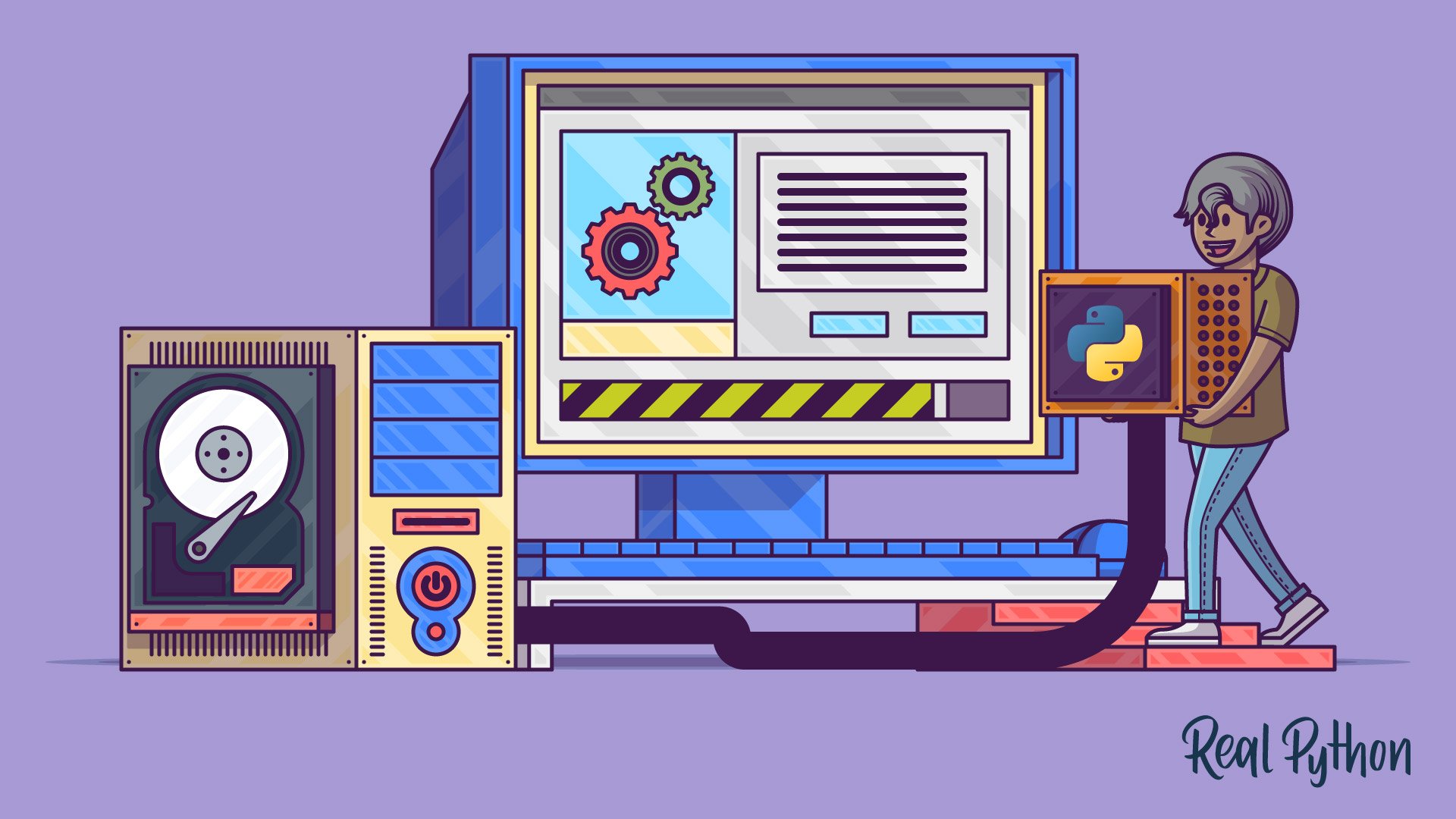

- #Ubuntu 16 python dev install install#
- #Ubuntu 16 python dev install software#
- #Ubuntu 16 python dev install download#
- #Ubuntu 16 python dev install windows#
Then press ctrl – b followed by 0-4 to observe individual windows in tmux. If everything was installed properly this should start training an agent, to observe workers enter in a new terminal. (universe) $ python train.py -num-workers 2 -env-id gym-core.PongDeterministic-v3 -log-dir /tmp/vncpong -visualise The VNC option though will take longer to solve but is a lot more interesting so we will use that. This fastest is the ALE (Arcade Learning Environment) or you can also run on a VNC remote desktop. For pong you have two options for which environment to run your algorithm with.
#Ubuntu 16 python dev install download#
So let’s download Open AI’s starter agent which will train an agent using the A3C Algorithim.

You should see Pong load and the green paddle do nothing but random actions, a pretty poor policy which will eventually yield results. Let’s do a test by downloading test.py running it in our conda environment you will also want to make sure that chromium browser is your default web browser.
#Ubuntu 16 python dev install install#
Next make sure your still in your Anaconda environment and lets clone and install Gym: $ source activate universe # IF LATER YOU GET DOCKER CONNECTION ISSUES TRY: To make it so you don’t have to use sudo to use docker you can: $ sudo groupadd docker You should see a message Hello from Docker! informing you that your installation appears correct. Next we can get started by installing Docker: $ sudo apt-get install \įor Ubuntu 14.04: $ sudo apt-get install \įollowed by: $ curl -fsSL | sudo apt-key add -Īnd test installation by: $ sudo service docker start (universe) $ pip install -upgrade tensorflow-gpu Choose one of the following: (universe) $ pip install -upgrade tensorflow If using tensorflow with GPU please follow all the instructions here and stop at Install Bazel and then follow by using pip installation. Next let’s install the Computer Vision package opencv: (universe) $ conda install opencvĪnd finally let’s install Tensorflow. (universe) $ conda install pip six libgcc swig We will need to build additional pylons, I mean packages. Now the best thing to do is to create a new isolated environment to manage package versions and so that you don’t have to reinstall Anaconda if you flub your python packages $ conda create -name universe python=3.5 anacondaĪnd activate the environment $ source activate universe You will have to open up a new terminal to use Anaconda. $ gedit ~/.bashrcĪnd copy and paste this in the bottom export PATH="/home/ $USER/anaconda3/bin:$PATH" When Anaconda asks if you would wish prepend the Anaconda install location to your bash type in ‘yes’, but if you accidentally defaulted no by pressing enter you can. $ wget Īnd install by: $ bash Anaconda3-4.2.0-Linux-x86_64.sh

$ sudo apt-get install golang python3-dev python-dev libcupti-dev libjpeg-turbo8-dev make tmux htop chromium-browser git cmake zlib1g-dev libjpeg-dev xvfb libav-tools xorg-dev python-opengl libboost-all-dev libsdl2-dev swigįor Ubuntu 14.04 $ sudo add-apt-repository ppa:ubuntu-lxc/lxd-stable # for newer golangĪnaconda Python 3.5 is by far the easiest python environment to use in conjunction with Universe. Let’s get started with the required Ubuntu packages It is a pretty exciting release so I thought I’d write up a simple guide for getting started with Universe & Ubuntu 16.04.
#Ubuntu 16 python dev install software#
On December 4th 2016 OpenAI released Universe described as:Ī software platform for measuring and training an AI’s general intelligence across the world’s supply of games, websites and other applications. I have decided to move my blog to my github page, this post will no longer be updated here.


 0 kommentar(er)
0 kommentar(er)
